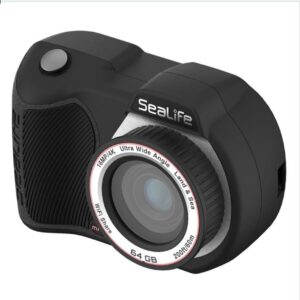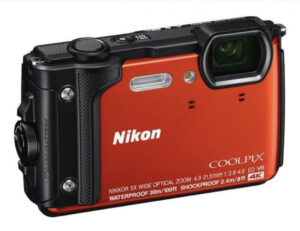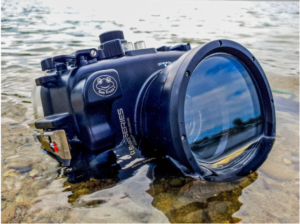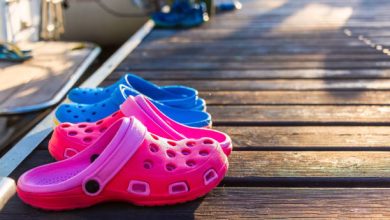The Complete Guide to Underwater Camera and Equipment

waterproof camera, best underwater camera, best waterproof camera, waterproof cameras, waterproof digital camera, waterproof small camera, 4k waterproof camera, water camera, good underwater camera, best camera for water, gopro alternative, waterproof travel camera, shockproof waterproof cameras, pro underwater cameras, underwater camera for snorkeling
Most people scuba-dive and snorkel to observe the beauty of marine life so different from what we see topside. No wonder they want to capture this beauty to preserve unique memories and share them with others.
Shooting dry land scenes can require a lot of gear if you’re an avid enthusiast or a professional. However, more and more people prefer using their smartphones since the gap in the quality of photo/video between an average camera and a smartphone has closed.
But this trend can’t be extended to underwater photography, which is gear-intensive by nature. Aside from an underwater camera, you need equipment that will protect it and compensate for the effect of water and lack of light.
We asked Gritr Outdoors, having a wide selection of quality sporting goods for scuba diving and snorkeling, to write a beginner’s guide to underwater photography equipment. It explains what GoPro alternatives are there, how to choose a good underwater camera right for your needs, and what accessories you need to build a system.
Underwater Camera
There are two ways you can go when choosing your personal best camera for water – a waterproof digital camera or a regular camera.
Waterproof cameras are made to be used underwater and don’t require underwater housing for protection. They are instantly easy to use in the water thanks to a simplistic design, big buttons, and no housing wrapping the camera body. Besides, the accessories are readily available. However, accounting for the prime intended use, many waterproof underwater cameras are not designed for shooting above the surface. Also, the quality of the image may be worse than that of some regular dry land cameras.
By the way, SeaLife manufactures one of the best underwater cameras, for example, the Micro 3.0, and accessories for them.
As an intermediate conclusion, waterproof cameras will suit divers and snorkelers with no experience with dry land cameras and enthusiasts who want to keep it simple.
On the other end, we have regular cameras that require waterproof housings. Unlike waterproof cameras, dry-lands is a more flexible category, providing more space in quality, price, and available accessories.
Generally speaking, you have three options: compact, mirrorless, and DSLR cameras. A compact point-and-shoot camera is ideal for beginners who don’t have much diving experience or confident photography skills because it’s intuitive and easy to use in underwater conditions. While they may lose to mirrorless and DSLR cameras in quality, modern compacts are capable of making good photos and videos with even dynamic range.
Some compact options include Sony RX100, Canon G7x, and Panasonic DMC-TS6D Lumix. A GoPro is a viable compact camera for shooting video. If you’re looking for a 4K waterproof, shockproof camera, consider the Nikon Coolpix W300. It’s one of the best underwater cameras for snorkeling and 100 feet deep diving.
A mirrorless or DSLR camera is a step up from a compact camera. What you choose depends on your budget because, generally, DSLRs are far more expensive. However, it doesn’t mean that they make higher-quality content. Several years ago, when mirrorless cameras only began to develop, full-frame DSLRs indeed were superior because a full-frame design allowed for better high ISO / low light performance. But it changed with the introduction of full-frame mirrorless cameras.
As a class, Mirrorless cameras tend to be smaller and lighter but have poorer battery life compared to DSLRs.
It’s worth mentioning that while full-frame sensors boast superior ambient-light performance demanded by underwater photography at greater depth, crop sensors increase the reach of your lenses. That’s why full-frame DSLRs and mirrorless cameras are best for wide-angle scenes, bigger marine dwellers, and shooting down deep in general, while cameras with crop sensors are better for taking macro photos.
Some Tips for Choosing the Best Camera for You:
- If you want to keep things simple and cheap, go with a compact camera that requires fewer accessories (no wet lenses and dome ports).
- Make sure your camera has a self-contained manual mode.
- Consider your needs (video, photo, or both) and choose a camera purposed for a particular type of content you want to make.
- Choose a land camera that has several options of housings and accessories.
- You may want your camera to shoot in RAW format.
- Look for a camera with a shorter shutter lag, especially if you’re into wide-angle shots.
Underwater Housing
If you’ve chosen a land camera over a small waterproof camera, you need a waterproof housing. First of all, don’t try to cut corners on a housing since this is the most critical piece of gear in your system that keeps your camera safe and alive.
Camera housings are made with polycarbonate, acrylic, and aluminum. Aluminum housings are the sturdiest and bear the lowest risk of a leak, but they are expensive, while plastic housings are the opposite – cheap and less reliable.
Always check the depth rating of the housing in question before purchase.
Lenses
If your choice is a mirrorless camera or a DSLR with interchangeable lenses, you need wet lenses for the content you want to create. Basically, you’ll come across macro diopters and wide-angle lenses. 60-100mm macro lenses magnify the image and, paired with a crop-sensor camera, will deliver nice macro shots. Wide-angle and fish-eye lenses are great for shooting sceneries as well as large objects and marine individuals.
Ports and Port Extensions
Things appear 25% larger underwater than in the air. This effect is called refraction, and it actually aids when we shoot macro. That’s why macro photographers use flat ports. However, in wide-angle photography, refraction is undesirable. A dome port helps reduce refraction, chromatic aberration, and radial distortion.
If you change lenses during your diving session, you need an extension port to fit different lens sizes.
Red Filter
For divers shooting deep down, a red filter is a must-have since the water transforms the spectrum. The effect doesn’t manifest on the surface, but the deeper you dive, the duller and more monotonous the colors appear.
Underwater Strobes
Making quality photos at a depth requires lighting. For wide-angle photography, you need two strobes with diffusers for more natural-looking lighting. If you’re into macro shots, you’ll be fine with one strobe. To connect your strobes to the camera, you need sync cords.
Final Thoughts
This is all the essential gear for underwater photography. However, don’t forget less critical supplies like rechargeable batteries and memory cards. You’ll need them when shooting video.
If you’re on a tight budget, start with a minimal system with a compact camera. It will help to shorten the learning curve as manipulating controls and adjustments is easier. When you feel like you’ve gained some expertise, change your camera for a more feature-rich and higher-quality one.








